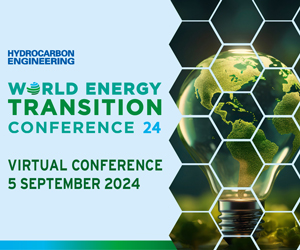Renewable energies are shaping the global energy future. Thanks to technological advancements, our cities are reinventing themselves. Facing energy crises, they represent a sustainable solution.
The integration of artificial intelligence in energy management optimizes efficiency and reduces carbon footprint. Automotive innovations, such as electric vehicles, play a key role in this transition. Waste methanation transforms organic waste into clean energy, contributing to the reduction of CO2 emissions. By adopting these solutions, we can design greener and more resilient cities in the face of climate challenges. Electric flexibility, combined with decentralized production, enhances the stability of the energy system. This promising future relies on sustained investments and a collective will to build a more sustainable world.
Why does the energy transition seem to be losing its way?
The energy transition is a complex process aimed at replacing fossil fuels with renewable energies. However, this transition seems to be slowing down today, even getting lost. Several factors contribute to this phenomenon. First, inconsistent government policies play a major role. For example, in the United States, Donald Trump’s cuts to renewable energies jeopardized the sector’s record growth, raising concerns among business leaders about a potential energy crisis. Additionally, the resistance of certain traditional industries, such as oil and gas, hinders progress toward cleaner energy sources.
Furthermore, investments in renewable energies do not always meet the ambitious targets set. In India, for example, despite NTPC’s commitment to invest over $23 billion in renewable energies, there remains a gap between targets and reality on the ground. This lack of adequate funding slows the development of the infrastructure necessary for an effective transition.
Finally, the lack of awareness and education around renewable energies limits the adoption of these technologies by the general public. Many remain skeptical about the reliability and profitability of renewable solutions, preferring more familiar traditional energy sources.
What renewable energies are still essential?
Despite the challenges, certain renewable energies remain essential to ensure a sustainable future. Solar and wind energy rank at the top due to their abundance and rapid deployment capability. Solar energy, in particular, has seen a significant decrease in costs, making photovoltaic panels accessible to a larger number of consumers and businesses.
Hydropower remains a key source, offering stable and controlled production. However, its expansion is limited by geographical and environmental constraints. Biomass and methanation, in turn, play a crucial role in organic waste management by transforming it into renewable energy, thereby contributing to the reduction of CO₂ emissions.
Moreover, geothermal and marine energy present interesting potential, although their development is still in the emerging phase. These sources provide production regularity and a low carbon footprint, making them attractive for diversifying the global energy mix.
How do policies influence the energy transition?
Public policies are crucial in guiding the energy transition. A favorable regulatory framework can accelerate the adoption of renewable energies, while a lack of government support can hinder progress. In Europe, for example, the European Union strongly encourages investments in renewable energies and electric flexibility, which are essential in the face of growing electrification. The adoption of ‘buyer-initiated’ certificates is an example of an incentive measure aimed at driving growth in these energies.
Conversely, some administrations, like Trump’s in the United States, have suspended the granting of permits for renewable energy projects on private lands, hindering local and international initiatives. This political interference creates uncertainty that discourages investors and slows the energy transition.
Nevertheless, positive initiatives also exist. A Danish investor recently raised €12 billion for a fund dedicated to renewable energies, demonstrating that it is possible to mobilize substantial capital to support these projects. Such initiatives reinforce the belief that renewable energies remain an essential component of our energy future.
What are the current challenges of the energy transition?
The energy transition faces several major challenges. One of the main challenges is managing the intermittency of renewable energy sources like solar and wind. Without appropriate infrastructure, it is difficult to guarantee a continuous supply of electricity. Electric flexibility, which allows for the adjustment of demand and supply in real-time, becomes essential. According to a report from ADEME, this flexibility is a strategic issue for effectively integrating renewable energies into the energy mix.
Another challenge is energy storage. Advanced storage technologies are needed to compensate for periods when production is insufficient. Batteries and thermal storage systems are promising solutions, but they require substantial investment to be deployed at scale.
Social acceptance and environmental issues also pose obstacles. The construction of new infrastructure, such as wind farms or hydropower dams, may face local opposition due to their impact on landscapes and biodiversity. It is crucial to reconcile energy development with environmental preservation to ensure a smooth transition.
Finally, financing remains a significant barrier. Although investments in renewable energies are on the rise, they are not enough to bridge the gap between current needs and future goals. Additional incentive measures and strengthened international collaboration are necessary to stimulate further investment.
What solutions can strengthen the role of renewable energies?
To overcome the challenges of the energy transition, several solutions can be considered. First, it is essential to strengthen policies and financial incentives in favor of renewable energies. This includes subsidies, tax credits, and innovative financing mechanisms, such as funds dedicated to renewable energies. For example, the site a Danish investor collecting €12 billion for a dedicated fund illustrates how private financing can play a crucial role in this area.
Second, technological innovation must be at the heart of the strategy. The development of new storage solutions and the improvement of the efficiency of existing technologies are essential to make renewable energies more reliable and competitive. The focus on semiconductors and other green technologies, as mentioned in the budget foreseeing an increase in investments, is a step in the right direction.
Third, it is crucial to promote education and awareness about renewable energies. Informing the general public about the environmental and economic benefits of these energy sources can foster broader adoption and increased political support.
Moreover, international collaboration is essential to share best practices and coordinate global efforts. Partnerships between countries, companies, and academic institutions can accelerate technological advances and the deployment of renewable energies on a global scale.
Finally, it is important to diversify the energy mix. Integrating multiple sources of renewable energy helps to offset intermittencies and ensures a stable and sustainable energy supply. Combining solar, wind, hydropower, and biomass, for example, offers resilience to production fluctuations.
How do international investments influence the energy transition?
International investments play a crucial role in energizing the energy transition. Significant funds from various countries and private investors enable the financing of ambitious and innovative projects. For instance, a Danish investor recently raised €12 billion for a fund dedicated to renewable energies, demonstrating heightened confidence in the potential of these technologies.
In India, investments in renewable energies are also growing. However, a gap persists between objectives and reality, underscoring the importance of maintaining sustained financial commitment to reach set targets.
In the United States, although policies under the Trump administration limited investments in certain renewable energies, there are still robust private initiatives that continue to stimulate the sector. Funding directed towards innovative technologies and renewal infrastructures is essential to maintain positive momentum.
Additionally, Europe is positioning itself as a leader in green investments. ‘Buyer-initiated’ certificates are a key mechanism for attracting private capital to renewable energies projects. This approach creates a favorable environment where private investments can thrive, thus supporting sector growth.
International investments also facilitate technology and know-how transfer, which is crucial for developing countries. This not only improves access to renewable energies, but also strengthens local capacities to manage and exploit these resources sustainably. Furthermore, partnerships between nations encourage the standardization of practices and technologies, thus reducing costs and increasing the efficiency of international energy projects.
What is the impact of technological innovations on renewable energies?
Technological innovations are at the heart of the evolution and efficiency of renewable energies. These advancements not only improve the performance of existing systems but also develop new methods of energy production and storage. Artificial intelligence (AI) plays an increasingly crucial role by optimizing the management of electrical networks and predicting energy needs, thereby contributing to a more efficient use of renewable energies.
Storage technologies, such as next-generation lithium-ion batteries, are essential to mitigate the intermittency of solar and wind energy sources. These innovations allow for the storage of energy produced during periods of high output for use when demand is higher, ensuring a continuous and stable supply.
The rise of electric vehicles (EVs) is another example of innovation having a significant impact on renewable energies. EVs, combined with charging infrastructures powered by renewable energy sources, can significantly reduce dependence on fossil fuels and lower CO₂ emissions. Additionally, methanation projects that transform organic waste into renewable energy illustrate how innovations can contribute to more sustainable resource management.
Finally, advances in materials and construction methods for solar panels and wind turbines enhance their efficiency and reduce production costs. These improvements make renewable technologies more accessible and competitive compared to traditional energy sources, thus fostering a broader adoption.
What is the role of electric flexibility in the energy transition?
Electric flexibility is a key element for successfully navigating the energy transition. It refers to the ability of the electrical network to adapt to variations in energy supply and demand. With the increasing share of renewable energies in the energy mix, flexibility becomes essential to ensure stable and reliable electricity supply.
Electric flexibility relies on several technologies and strategies, such as energy storage, demand management, and smart grids. Energy storage, especially via batteries and thermal storage systems, allows for storing surplus energy produced by renewable sources to be reintroduced when demand is high or production is low.
Demand management also plays a crucial role. By adjusting energy consumption according to the availability of renewable sources, it is possible to reduce demand peaks and smooth out the load curve. Smart grids, in turn, use advanced communication and control technologies to optimize energy distribution in real-time, thereby improving the overall efficiency of the electrical system.
According to an ADEME report, electric flexibility is considered a strategic issue for integrating renewable energies into the grid. It not only optimizes the use of available resources but also strengthens the resilience of the system in the face of fluctuations and disruptions. By investing in flexibility solutions, countries can accelerate the transition towards a cleaner and more sustainable energy system.
How do social perceptions influence the energy transition?
Social perceptions play a decisive role in the success of the energy transition. Public acceptance and support are essential for the implementation of renewable energy projects. However, various social obstacles can hinder this transition.
One of the main concerns is the environmental acceptability of renewable projects. Installations such as wind farms or solar plants may face local resistance due to their visual impact or potential effects on wildlife and flora. It is therefore crucial to involve local communities in the planning process and ensure that projects are designed to minimize negative impacts while maximizing benefits for the local population.
Education and awareness are also essential to change perceptions and increase public support. By informing citizens about the environmental, economic, and social benefits of renewable energies, it is possible to reduce reluctance and promote broader adoption. Effective communication campaigns can help demonstrate how renewable energies can create jobs, improve quality of life, and protect the environment.
Furthermore, citizen participation in energy projects can enhance the sense of ownership and commitment. Community initiatives, like renewable energy cooperatives, allow individuals to get directly involved in the production of clean energy, thus creating a personal connection to the energy transition.
Finally, it is important to consider social inequalities in the energy transition. Ensuring equitable access to the benefits of renewable energies and avoiding projects that worsen existing disparities is crucial for ensuring a just and inclusive transition. This involves ensuring that costs and benefits are distributed fairly and that all communities have the opportunity to participate and benefit from energy initiatives.
What is the future of renewable energies in an uncertain global context?
The future of renewable energies remains promising despite an uncertain global context. The necessity to combat climate change and the growing pressure to reduce CO₂ emissions ensure that renewable energies will continue to play a central role in the energy future.
Technological innovations and cost reductions are making renewable energies increasingly competitive compared to fossil fuels. Advances in energy storage, the efficiency of solar panels and wind turbines, as well as new demand management solutions contribute to making these energy sources more reliable and accessible.
Moreover, international climate commitments, such as the Paris Agreement, encourage countries to intensify efforts to adopt clean energies. The transition to a carbon-free world, although complex, is becoming an unavoidable priority for many nations.
Additionally, the growing demand for sustainable energy solutions in developing countries, such as India and Uruguay, opens new opportunities for renewable energies. These emerging markets represent a significant portion of the future growth of the sector, with major investments anticipated to develop renewable infrastructure.
However, the road to a sustainable future is not without obstacles. Geopolitical tensions, economic fluctuations, and variations in national energy policies can influence the dynamics of the transition. It is therefore crucial to maintain strong international cooperation and continue to invest in research and development to overcome these challenges.
In summary, despite uncertainties, renewable energies remain essential for building a sustainable energy future. Through a combination of technological innovations, favorable policies, and continued investments, the sector is well-positioned to play a key role in the global energy transformation.
References and additional resources
To further explore the subject of the energy transition and renewable energies, you may consult the following resources:
- A Danish investor collects €12 billion for a fund dedicated to renewable energies
- Investments in renewable energies in India: a gap between objectives and reality
- ‘Buyer-initiated’ certificates essential for driving the growth of renewable energies
- Record growth of renewable energies in the United States at risk due to Trump’s threats
- Budget foreseeing an increase in investments and production: focus on semiconductors, renewable energies, and defense according to Ro
Articles similaires
Thank you!
We will contact you soon.














